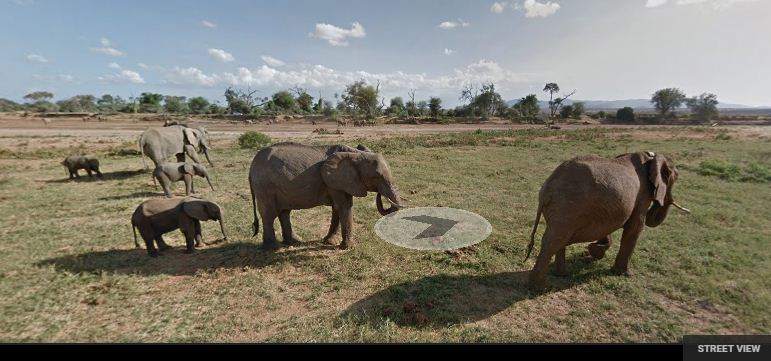
For once, Google was unlikely to face privacy complaints as the US Internet giant on Tuesday launched its Street View service in Kenya’s Samburu park, in a move conservationists said could help protect endangered elephants.
Special cameras have taken panoramic images of the reserve while driving down dusty tracks – and have also been fixed to a backpack to penetrate deep into the bush.
Some of Google’s previous Street View forays have brought complaints on privacy grounds.
But this time there were no demands to blur out faces – the main residents of the 165 square kilometre reserve are 900 elephants.
The idea is to allow viewers to click and view the elephant herds close up.
“We hope that by bringing Street View to Samburu, we will inspire people around the world to gain a deeper appreciation for elephants,” said Farzana Khubchandani of Google Kenya.
Slightly larger than a basketball, Google’s camera contains 15 individual fixed-focus lenses that simultaneously capture a 360 degree image roughly every three metres.
The Kenya project was launched in collaboration with conservation group Save the Elephants.
“It’s exciting to open a window onto Samburu, and to help us better protect its elephants,” said Save the Elephants chief Iain Douglas-Hamilton, speaking in Samburu, some 300 kilometres north of the Kenyan capital Nairobi.
Kenya is struggling to stem poaching to protect its remaining elephant population – currently estimated at 30 000 – and just over a thousand rhinos.
With ivory raking in thousands of dollars a kilo in Asia, conservationists have warned that African elephants could be extinct in the wild within a generation.
“Giving people a virtual tour will bring Samburu to the world, and inspire the world to come to Samburu,” county governor Moses Lenolkulal said.
“The more people experience our culture, our people and the majestic elephants and other wildlife with which we co-exist, the more we are able to conserve and sustain the Samburu culture and its fragile ecosystem for generations to come.”
